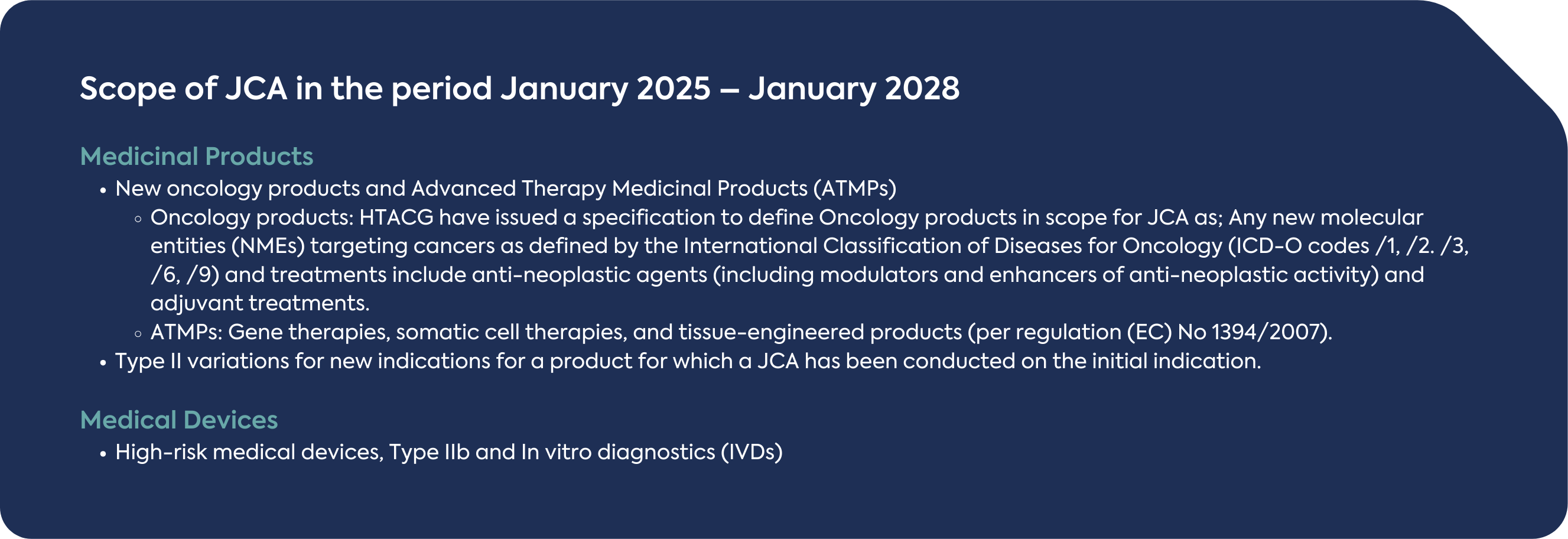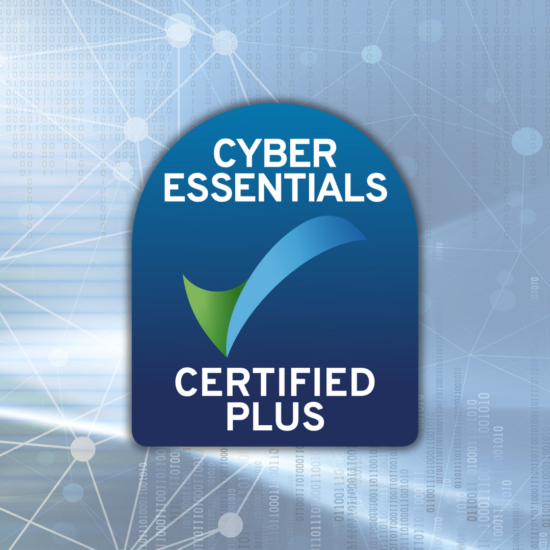DLRC Achieves Cyber Essentials Plus Certification
Published Apr 11, 2025
Published 02nd December 2024

The EU (European Union) Health Technology Assessment Regulation (HTAR) (EU) 2021/2282 will come into force from January 2025, creating a harmonised clinical evaluation of health technologies across member states (MSs) with the ultimate aim to improve equal access to medicines across Europe. Value assessment of new technologies remains with national bodies, but the coordinated clinical assessment in parallel with centralised marketing authorisation applications (MAA) will impact developers of medicinal products and devices (health technology developers) ways of working and distribution of resources.
The new framework is led by the Health Technology Assessment Coordination Group (HTACG) made up of representatives of all MSs and supported by the European Commission’s (EC) HTA secretariat. Following the release of the HTA Regulation in 2022, the supporting Implementing Acts and Guidance are mostly available for medicines, with guidance for devices following behind.
This article provides a detailed review for medicines developers of the procedures available from January 2025 and some key considerations for their preparation and planning.
The phased implementation of the health technology assessment regulation (HTAR) EU Regulation 2021/2282 begins on 12th January 2025. From this date, marketing authorisation applications (MAAs) for medicinal products with a new active substance for which the therapeutic indication is the treatment of cancer and medicinal products that are advanced therapy medicinal products (ATMPs), as defined in the regulation (EC) No 1394/2007, will be in scope for Joint Clinical Assessments (JCAs). The JCAs will be facilitated by the EU HTA Coordination Group (HTACG) in parallel with European Medicines Agency (EMA) review of the MAA. The JCA outcome will provide core clinical effectiveness data to national HTA bodies to begin reimbursement assessment at the vel.
2025 will also see the launch of the Joint Scientific Consultation (JSC) process. The JSC is a framework for developers to obtain scientific input on the information and evidence needs for a subsequent Joint Clinical Assessment (JCA) during the clinical development of a health technology. Similarly to EMA scientific advice, the JSC report is not binding but needs to be considered for the subsequent JCA by the medicine developer and EU HTA Coordination Group (HTACG).
Developers will need to contact the HTA secretariat at the European Commission (EC) and utilise a new IT platform in order to navigate the Joint Clinical Assessment (JCA) and Joint Scientific Consultation (JSC) procedures. The HTA secretariat will coordinate the involvement of patients, clinical experts and other relevant experts (‘individual experts’) in joint clinical assessments and joint scientific consultations as described in the HTA regulation. The format and timelines for communication with the HTA coordination group (HTACG) are becoming clear with the majority of key guidelines now available.
A crucial consideration for medicine developers submitting MAAs for new products starting from January 2025 is understanding what is already known and what remains uncertain.

For developers in the final stages of MAA preparation, a key factor will be the preparation of the Joint Clinical Assessment (JCA) dossier and planning for responding to EMA D120 questions at the same time. Looking step-by-step at the JCA procedure, what is available to developers and what will be issued or clarified before 12th January?
Eligibility request & IT platform access – Developers of new oncology and ATMP products have to notify both HTA and EMA of the planned submission of their MAA. The EMA eligibility request for pre-submission activities now includes a section to indicate if the HTA Regulation is applicable and asks applicant to send the form to the HTA secretariat in parallel. Developers are also encouraged to inform the HTA secretariat of their intention to submit an MAA that is in scope of the HTAR via email. Applicants will then receive access to a pre-submission workspace area (based on SharePoint) to provide the letter of intent to submit. The IT workspace allocates a procedure number, and this is used to track the JCA through subsequent steps.
At MAA validation – The applicant provides the draft summary of product characteristics (SmPC) and Clinical Overview to the HTACG via the workspace to initiate the scoping exercise with all MSs. The workspace can provide notifications to parties involved in JCA review; however. it is not a messaging system so email to the HTA secretariat will be required during the procedure.
Receipt of the consolidated PICO request – for standard timetable MAAs the request is received 10 days after D120 List of questions from CHMP. The JCA Assessor and co-assessor draft the initial Population, Intervention, Comparator(s), Outcomes (PICO) and MSs review and add relevant points. The JCA subgroup for medicines will validate the request once drafted. The aim is to have an optimal number of PICOs but all PICOs requested by MSs can be included.
JCA dossier preparation – the applicant has 100 days from receipt of the scoping results to prepare the JCA dossier (for a standard timetable MAA with standard CHMP stop-clock, for extended stop-clocks the dossier is expected 45 days ahead of the CHMP opinion). Once submitted the HTA secretariat performs a completeness check and missing information can be requested from the developer to be submitted within 15 days. The implementing act includes provision for potential extension to the deadline for submission of the dossier in the case that the centralised procedure does not follow common timelines (i.e. extended stop-clock) and the decision to grant extension is made by the HTA secretariat in conjunction with the JCA assessors.
JCA report – The final JCA report must be issued on the day of the EC decision granting the MA. Given that there may be further data submitted to CHMP between D120 list of questions (LOQs) and the CHMP opinion it is envisioned that may be necessary to provide additional evidence to the HTACG, but this is limited to no later than 7 days after the CHMP opinion.
Publication of JCA report and dossier – As laid out in the HTA regulation (Article 30) both the JCA report and submitted dossier will be published following the procedure. Prior to publication the developer is given the opportunity to review. Developers have 7 days following receipt of the draft JCA report to advise of technical/factual inaccuracies and information considered to be confidential. Developers must demonstrate the commercially sensitive nature of the information for it to be considered confidential.
Updates to an existing JCA – Developers will have the opportunity to proactively submit new relevant information, data, analyses and other evidence to the HTACG – even if these were not specified in the initial JCA report. The HTACG will determine whether the update will be accepted into its annual work programme. Understanding of the types of new data or evidence that would support an update to the JCA will be important for the future.
Developers have a clearer picture of the process and expectations for the JCA and can access information from the HTA regulation itself, associated implementing acts and available guidelines. However, there is much learning to be had from the first JCA procedures and still some questions for the inevitable unplanned circumstances that may occur with any MAA review. Both EMA and HTACG are calling for increased planning from developers for MAA submission to support resource management at both organisations and to improve predictability of workload. This is reflected across several initiatives.
For developers planning EU MAA submission for new ATMPs or oncology treatments in the next few years, the option for Joint Scientific Consultation (JSC) on evidence needed for the JCA should be considered. JSC offers consolidated feedback from MSs on clinical aspects of evidence generation, with discussion regarding potential PICO as its core purpose. JSC can also include advice on Post Licencing Evidence Generation (PLEG) if a study proposal is included, however, PLEG-only requests for JSC will not be granted. JSC can be sought alone or in parallel to regulatory scientific advice. For the latter, some information sharing is anticipated such as the EMA advice coordinator attending JSC meetings. However, the developer will receive separate outcome letters from CHMP and HTACG. There will be 2 specified time periods in 2025 in which JSCs can be requested. Overall, the JSC process is around 4.5 months once the draft briefing book is received.

The request template will be submitted and checked against the eligibility criteria, HTACG will have 15 days from the end of the request period to provide feedback on acceptance. If more than 10 requests are received selection criteria will be applied, this is to be defined in future guidance documents.
Each JSC will include several phases and a discussion meeting with the developer, with relevant expert groups included. Once acceptance is communicated the developer will prepare the briefing book. Following briefing book submission, the developer will receive a list of issues and provide a written response. A discussion meeting will be held, and the final outcome will be provided in writing following that meeting. The outcome is intended to provide the common position of MSs. Individual positions by specific MSs may be included in an Annex where further specifications are driven by national requirements.
With the new framework of assessment and advice the implementation of the HTA regulation brings, there are many considerations for companies that may affect resourcing, governance and overall approach to product development. A key benefit of the new framework is to reduce volume of work for developers to submit multiple clinical dossiers in multiple EU MSs, as well as aiding in efficient resource use, and strengthen the quality of HTAs. However, there are potential new areas that may be challenging.
The introduction of Joint Clinical Assessments (JCA) and Joint Scientific Consultations (JSC) under the Health Technology Assessment Regulation (HTAR) represents a significant advancement in harmonising health technology assessments across Europe. While these processes aim to streamline evaluations and improve market access timelines, they require a proactive and strategic approach from developers of medicinal products. Successfully navigating these requirements entails careful planning and a clear understanding of the expectations for clinical evidence.
For developers, engaging early in the JSC process ensures alignment with HTA standards and minimises the risk of producing misaligned evidence, while effective preparation for JCA enables smoother submissions and faster decision-making. These processes can be complex, but they also offer significant opportunities for developers who take the time to integrate them into their overall product strategy.
As the Health Technology Assessment (HTA) landscape continues to evolve, developers who seek expert guidance and adjust their strategies to meet these new requirements will be well-positioned for success in the competitive European market. Our regulatory experts at DLRC, along with our HTA partners, are poised to optimise the JCA and JSC submission processes by providing strategic insights, managing technical details, and ensuring compliance with the latest guidelines. For further information, please reach out to us at hello@dlrcgroup.com.

Published Apr 11, 2025

Published Mar 27, 2025

Published Mar 25, 2025

Published Mar 06, 2025

Published Feb 26, 2025

Published Feb 25, 2025

Published Feb 03, 2025

Published Feb 03, 2025

Published Jan 30, 2025